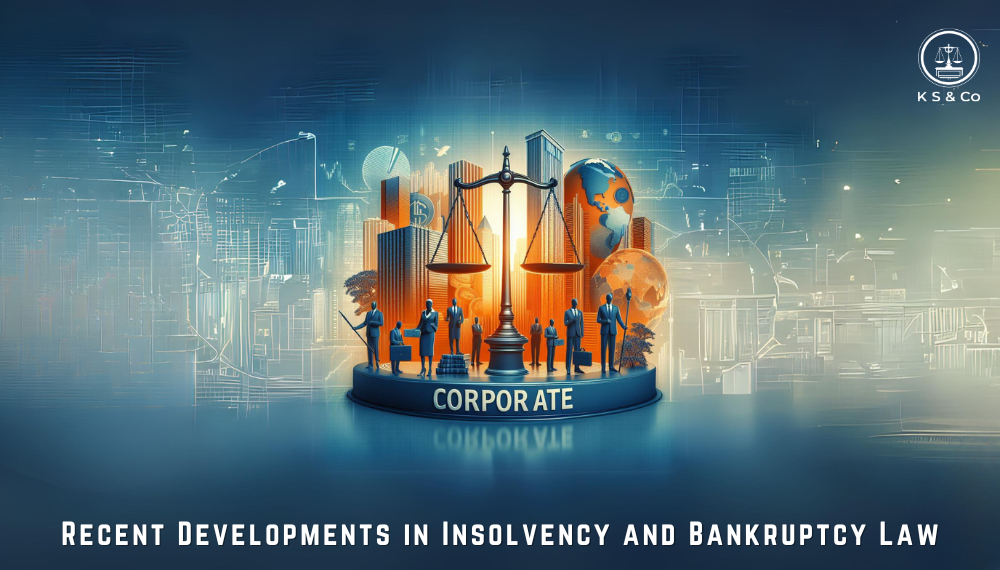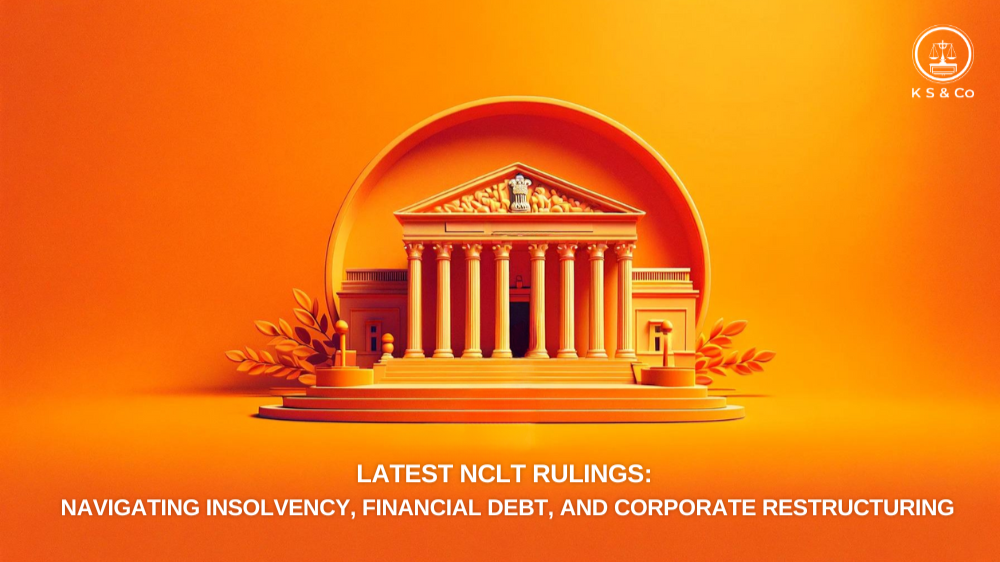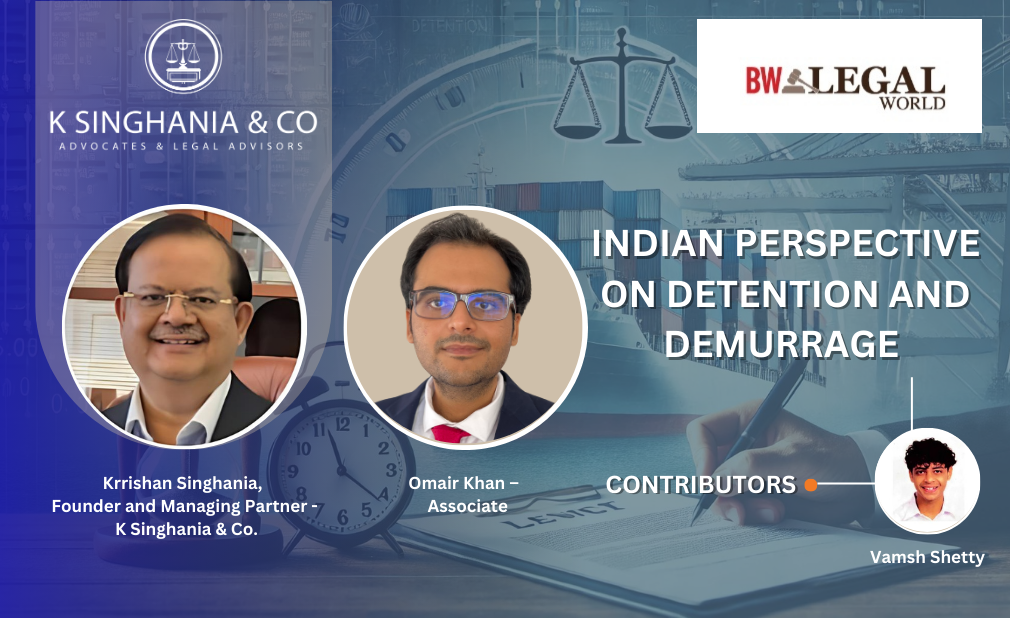The recent developments in the Insolvency and Bankruptcy Code has dynamically changes the way the code shall be governed in the future. The NCLT, NCLAT and Supreme Court have passed several landmarks judgements in 2019, further the Central Government have also passed amendments and MCA has issued notification which shall help in streamlining the insolvency process in the future.
CIRP application against companies struck off by the RoC is maintainable
Facts
In the case of Mr. Hemang Phophalia vs The Greater Bombay Co-operative Bank Limited, the Greater Bombay Co-operative Bank Limited had filed an application under Section 7 of IBC(Insolvency and Bankruptcy Code) to initiate CIRP(Corporate Insolvency Resolution Process) against Penguin Umbrella Works Private Limited which was admitted in the NCLT, Mumbai Bench. The appellant filed an appeal stating that as the Corporate Debtor, was struck off from the RoC(Registrar of Companies), thus CIRP cannot be initiated. The main issue was whether an application for CIRP under section 7 or 9 can be initiated against a company struck off by the RoC ?
Ratio
It was held that CIRP application against companies struck off by the RoC is maintainable. Further, it was also stated that NCLT also has the power to restore the name of the company and all other persons in their respective position for the purpose of initiating CIRP under section 7 and 9 of IBC.
State Bank of India v Rohito Ferro Tech Pvt Ltd
Facts
SBI had moved an application in NCLT under Section 7 of the IBC against Rohit Ferro Tech, but the adjudicating authority dismissed the appeal stating the RBI circular issued by the RBI, dated February 12, 2018, based on which the petition is filed for initiating CIRP has been declared to be ultra vires and illegal by the Supreme Court. Therefore, the CIRP cannot be admitted. This was appealed in the NCLAT by the SBI
Ratio
The NCLAT dismissed the order passed by NCLT stating that only the circular had been declared ultra vires and not the CIRP. It was clarified by the NCLAT that any creditor cannot only rely upon the circular to initiate insolvency proceedings, it needs to be backed by proper evidence.
Jet Airways (India) Ltd. vs. State Bank of India & Anr.
Facts
In this case CIRP proceedings were going on against Jet airways in two countries simultaneously, in India and in Netherlands. The issue arose whether separate proceedings of CIRP can take place against a common ‘Corporate Debtor’, if it takes place in two separate jurisdictions or countries?
Ratio
The NCLAT held that the Dutch Trustee also hold the same position as the RP in India. Therefore, the NCLAT after a guarantee from the Dutch counterpart that it wont be interfering with the CIRP in India, it allowed Dutch Trustee to attend the CoC meetings in India.
Jignesh Shah and another v. Union of India and Anr.
Facts
In this case, a winding up petition was initiated against La-Fin Financial Services Private Limited by the Bombay High Court. A letter of undertaking given by La Fin, a group company promoted by Jignesh Shah, on 20 August 2009, to IL&FS in which it undertook to purchase the shares held by IL&FS in MCS Stock Exchange with in three years. IL&FS exercised the option in 2012 but La Fin refused to honour the undertaking. But after the coming up of the IBC, 2016, the winding up petition were converted into company petitions under section 7 of the IBC. So the main issue was whether a winding up petition, which is converted into a Section 7 application under IBC be barred by lapse of time under the limitation act.
Ratio
The Supreme Court stated that in winding up or commercial insolvency cases, first there is a requirement that the default should takes place, after which the debts remain outstanding. It is only on this date that the limitation period is triggered. It also clarified that the winding up proceeding is a right in rem and not a recovery proceeding. Thus, concluding that the Limitation Act is applicable in cases of insolvency.
Pre-Incorporation of the moratorium period before the initiation of CIRP
Facts
In the case of NUI Pulp and Paper Industries Pvt Ltd v Roxcel Trading GmbH, Roxcel Trading GmbH had filed an application under section 9 of the IBC against NUI Pulp and Paper Industries for the unpaid operational debt. The Corporate Debtor claimed that the debt is disputed therefore it seek time for filing the reply. But Roxcel had apprehensions that the Corporate Debtor might be intending to sell its assets thus leading to abuse of the process of the IBC. Therefore, the NCLT under Rule 11 of the NCLT rules, 2016 passed an order stating that the Directors of the Corporate Debtor shall create no interests or no assets shall be sold to any third party, ordering a pre- moratorium order. This was challenged by the Corporate Debtor in the NCLAT. So, the issue was whether the NCLT has inherent powers under rule 11 of NCLT rules to alienate powers of the Directors of the Corporate Debtor?
Ratio
The NCLAT stated that there is no such restrictions which have been imposed upon the NCLT to pass orders under rule 11 of the NCLT Rules. If the NCLT feels that there has been a situation of abuse of process of law or injustice, then the NCLT can pass such interim relief at any stage.
When can the High Court interfere to with the orders passed by the NCLT
Facts
In the case of M/s Embassy Property Developments Pvt Ltd v State of Karnataka and Ors , the Resolution Applicant, CoC and the Corporate Debtor had filed appeal in the Supreme Court challenging the interim order passed by the Karnataka High Court, which had put a stay on an order passed by the NCLT. The application in High Court was filed by the Resolution Professional. The issue which arose in this case was whether the High Court can pass any interim order under article 226/227 interfering with the order of the NCLT and also ignoring the fact that there is an alternative remedy of appealing to the NCLAT for the same?
Ratio
The Supreme Court stated that the NCLT is a creation of the special statute to discharge specific functions.Therefore, it cannot be given a status higher than judicial courts which have power of judicial review over the administrative action. It also stated that NCLT’s are not even civil courts, thus , it can only try cases within its statute which has been prescribed by law and no other matters i.e. matters of public interest, civil nature etc. Therefore, the HC can try matters in realm of public law which arise in matters of IBC 2016.
ArcelorMittal India Private Limited v. Satish Kumar Gupta and Others (Essar Insolvency case)
Facts
In this case Financial Creditors of the Essar Steel India Limited had filed an application for CIRP under section 7 of the IBC. The main issue in this case was with regard to the treatment of the secured and unsecured creditors, determining of the powers of the CoC , powers in relation to the powers of accepting the resolution plan and the constitutional validity of the section 12(3) and section 30(2) of the IBC.
Ratio
The Supreme Court differentiated with regard to the payment of debts to the Secured and Unsecured creditors. It pressed on the fact that the unequals cannot be treated equally. Thus, a resolution plan cannot be rejected on the ground that the plan is unjust or unfair to a certain class of creditors, if the interest of the each class of the creditor has been looked into. The Supreme Court also stated that the CoC has the total powers over the running of the business of the Corporate Debtor, hence such vital powers cannot be delegated to any other person or sub committees. But the Supreme Court clarified that the Sub Committees can be instituted for other purposes such as performing of administrative functions etc. A Section 12(3) of the IBC, which provided for the mandatory timeline of 330 days for completion of CIRP, if not complied with, the corporate debtor would be liquidated. The Supreme Court partially struck down the section in which the word ‘mandatory’ was considered as arbitrary and unreasonable under article 14 of the Indian Constitution and it also hindered with the rights of the carrying out business under article 19(1) (g). Section 30(2) of the IBC provided for the minimum payment that needs to be made dissenting financial creditors as well as the operational creditors. The Supreme Court held that this section was a mere guideline that the CoC needs to follow while it arrives at any decision regarding the resolution plan and any such decision must be taken taking the feasibility and the ground realities. Thus, section 30(2) was upheld by the Supreme Court.
AMENDMENTS AND NOTIFCATIONS
Notification of provisions under the Insolvency and Bankruptcy Code, 2016 relating to Personal Guarantors to corporate debtors – dated 15 Nov 2019
As per this notification, from 1st December 2019, the IBC shall be applicable to the personal guarantor of the corporate debtor. This notification clarifies that the part III of the IBC shall be operational only with regard to the personal guarantors. The essential sections of IBC section 78 (except with regard to fresh start process ),94 to 187, clause (g) to clause (i) of sub-section (2) of section 239;clause (m) to clause (zc) of sub-section (2) of section 239; clause (zn) to clause (zs) of sub-section (2) of section 240; and section 249 and the Insolvency and Bankruptcy (Application to Adjudicating Authority for Insolvency Resolution Process for Personal Guarantors to Corporate Debtors) Rules, 2019 ( “Insolvency Resolution Rules”) and the IBBI (Insolvency Resolution Process for Personal Guarantors to Corporate Debtors) Regulations, 2019 ( “Insolvency Resolution Regulations”); Insolvency and Bankruptcy (Application to Adjudicating Authority for Bankruptcy Process for Personal Guarantors to Corporate Debtors) Rules, 2019 ( “Bankruptcy Rules”) and the IBBI (Bankruptcy Process for Personal Guarantors to Corporate Debtors) Regulations, 2019 ( “Bankruptcy Regulations”), shall also be coming into effect from 1st December 2019.
Notification under section 227 of the Insolvency and Bankruptcy Code, 2016 – dated 18 Nov 2019
As per this notification, the Central Government in consultation with the RBI, under the powers given under section 227 of the IBC has brought within its ambit Non – Banking Financial Companies (which include housing Finance Companies) which have the asset size of 500 crore or more, as per last audited balance sheet.
Cabinet approves Insolvency and Bankruptcy Code (Second Amendment) Bill, 2019
The Union Cabinet has approved to make amendments in the IBC on 11th December, 2019. The sections that are set to be amended are sections 5(12), 5(15), 7, 11, 14, 16(1), 21(2), 23(1), 29A, 227, 239, 240. Further it also recommends to insert new section 32A. The amendments set to remove bottlenecks and streamline the CIRP process which will help in boosting the investment in financially distressed sectors. It also aims to introduce threshold limit on frivolous triggering of CIRP by an authorized representative in large numbers. The amendment shall further ensure that for continuing the corporate debtor as going concern the licences, permits etc. shall not be terminated, cancelled or renewed during moratorium period. It is also stated that a successful resolution applicant shall be protected from criminal proceedings against offences committed by previous management/promoters.






